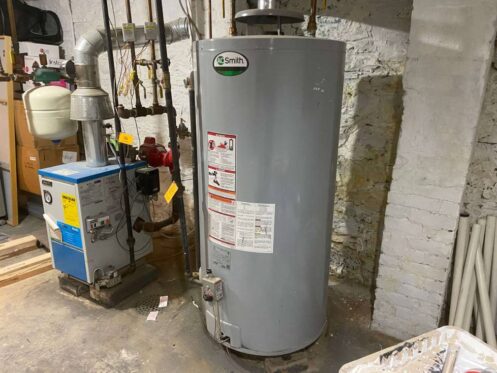A reliable water heater is one of those comforts you appreciate most when something goes wrong. Cold showers, higher energy bills, and unexpected leaks can disrupt any Boulder home. Yet many homeowners don’t realize just how much you can do to keep your tank water heater in peak condition and extend its lifespan. This guide will arm you with practical steps (plus a few pro pointers from local experts) to help you get the most from your water heater investment.
Why Water Heater Maintenance Matters for Boulder Homeowners
If you’ve lived in Boulder for a few seasons, you know how important reliable hot water is. Between freezing winters, hard water challenges, and daily household wear and tear, your water heater works hard year-round. Most traditional tank water heaters last about 8–12 years, but neglect or mineral buildup can shave years off that timeline. On the bright side, a little regular maintenance goes a long way in preventing costly breakdowns or premature replacement.
Understanding Your Water Heater
Before you start any maintenance, it helps to know which type of water heater you have:
- Conventional storage tank water heaters: The most common type of tank water heaters, these units store 30–80 gallons of hot water at all times.
- Tankless water heaters: These heat water only as needed, providing efficiency and space savings.
- Heat pump water heaters: More energy-efficient than tank water heaters, but less common, especially in older Boulder homes.
Regardless of your model, most maintenance steps are similar and can help any unit last longer and perform better.
Key Tips to Extend the Life of Your Water Heater
1. Flush the Tank Annually
Why it matters: Boulder’s mineral-rich water means sediment naturally settles at the bottom of your water heater. If left unattended, these minerals form a thick layer that forces your unit to work harder, reducing its efficiency and potentially damaging the tank.
How to do it (for tank water heaters):
- Turn off the power source:
- For electric water heaters, go to your electrical panel and turn off the power at the circuit breaker.
- For gas models, turn the thermostat to “pilot” or “off.” Shut off the cold-water supply (usually a valve on the cold-water inlet at the top of the tank).
- Attach a garden hose to the drain valve at the base of the tank.
- Direct the hose outdoors or to a drain, then open the valve. (Use caution: the water will be hot).
- Let the tank fully drain to flush out sediment.
- Once empty, close the valve, remove the hose, and reopen the cold-water supply to refill the tank.
- Once the tank is full, restore power or turn the gas thermostat back to “on.”
- Pro tip: An annual tank flush dramatically extends water heater life and improves overall efficiency. If you’re unsure about tackling this regular maintenance, consider having a professional plumber do it for you.
2. Check (and Replace) the Anode Rod
Why it matters: The anode rod is a “sacrificial” metal rod inside your water heater that attracts corrosive minerals, stopping them from eating away at your tank. Once the anode rod is depleted, your tank becomes vulnerable to rust, leaks, and early failure.
How to do it:
- Power down your water heater and carefully remove the anode rod from the top of the tank (you may need a socket wrench).
- Inspect the rod. If it’s covered in mineral crust or mostly dissolved, it’s time to replace it (usually every 2–4 years in Boulder’s water).
Pro tip: Having a plumber check your anode rod during your annual service can save you from surprise leaks and extend your system’s lifespan by years.
3. Test the Temperature and Pressure Relief (TPR) Valve
Why it matters: The TPR valve is a vital safety feature designed to release excess pressure if your water heater overheats or builds up too much pressure inside the tank. If this valve malfunctions, that pressure has nowhere to go—creating a risk of tank leaks, system failure, or even a dangerous rupture.
How to do it:
- Place a bucket under the TPR valve (usually found on the side or top of the tank).
- Gently lift the lever; you should hear a rush of air or see a small amount of water release.
- If nothing happens—or if the valve continues to drip afterward—it’s best to have a technician replace the valve promptly to avoid safety hazards.
Pro tip: This TPR Valve test is often included in annual water heater maintenance. A licensed professional can test the valve correctly and safely while inspecting for other signs of pressure imbalance or wear.
4. Set a Safe Temperature
Why it matters: Setting your water heater above 120°F may seem like a good idea, but higher temperatures speed up mineral buildup, waste energy, and can even cause scalding.
What to do:
- Set your thermostat to 120°F.
- This temperature is hot enough for daily use and sanitization but gentle on your system and your skin.
5. Insulate the Tank and Pipes
Why it matters: Insulation helps your water heater hold heat more efficiently, especially on chilly Boulder nights. It reduces standby heat loss, keeps your water hotter longer, and eases the workload on your heater.
How to do it:
- For older tanks, consider adding a water heater insulation blanket (found at most hardware stores). Consult your manual or a trusted plumber before doing so, as some electric water heaters and heat pump water heaters have specific insulation guidelines and manufacturer warnings.
- Insulate the first 3 feet of the hot and cold water pipes connected to your heater.
Caution: Check your manual or with a professional before insulating newer models, as some are already insulated.
6. Schedule Annual Professional Maintenance
Even the most diligent DIYers benefit from an annual check-up by a licensed technician. Professional plumbers can spot early signs of trouble, flush sediment safely, inspect the anode rod, and check all components for optimal operation. Regular maintenance isn’t just about fixing current issues; it’s about preventing sizable headaches and surprise costs later on.
Common Warning Signs You Shouldn’t Ignore
Watch out for these red flags that could indicate your water heater needs extra care or urgent service:
- Rusty or discolored hot water
- Unusual popping or rumbling noises from the tank
- Water pooling around the base of the heater
- Hot water that runs out quicker than usual
- Fluctuating water temperature
Experiencing any of these? It may be time for a repair or a new unit. Acting early often means the difference between an affordable fix and a major emergency.
Energy Efficiency Upgrades for Boulder Homes
Considering an upgrade? New high-efficiency and tankless water heaters can lower your energy bills and provide longer-lasting hot water, especially in Boulder’s climate. Modern units feature better insulation, smarter controls, and eco-friendly operation. If your system is over 10 years old, it’s worth discussing replacement options and energy savings with a local expert.
Take Care of Your Comfort and Schedule Trusted Service
With a few simple habits, Boulder homeowners can keep their water heaters running smoothly for years. But remember, when in doubt or if you’re due for a tune-up, it pays to work with a trusted local team.
Precision Plumbing Heating Cooling & Electric has been helping Boulder families and businesses with same-day water heater service, expert repairs, and honest guidance for over 40 years.
Don’t risk your comfort or your home’s plumbing—contact Precision Plumbing Heating Cooling & Electric for annual maintenance, repairs, or to explore your upgrade options. Our friendly experts are just a call or click away and happy to help you save money, energy, and peace of mind.



